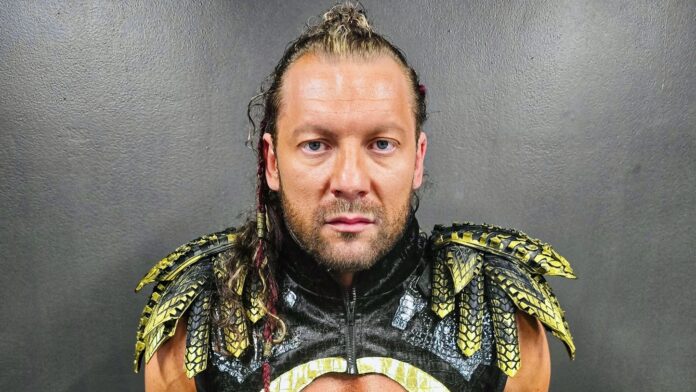Professional wrestling has undergone a dramatic transformation in the past decade, shifting from a tightly protected industry shrouded in “kayfabe” to one where the line between character and performer has become increasingly blurred. Few wrestlers understand this evolution better than AEW star Kenny Omega, who helped pioneer this change through projects like “Being The Elite” (BTE).
In a wide-ranging conversation with producer Adi Shankar, Omega offered candid insights about how wrestling’s relationship with its audience has been fundamentally altered and the creative challenges this presents for modern performers.
The Ultimate Expression of Freedom
At its core, Omega still views professional wrestling as an unmatched creative medium, calling it “the ultimate expression of freedom” in entertainment. This versatility is what initially drew him to the art form and continues to drive his passion.
“The beauty of wrestling is that it can actually be anything,” Omega explained. “And I think that’s what we try to prove with BTE is that we can be a murder mystery. We can be a horror. We can be a comedy. We can be a raunchy comedy. We can be a romcom. We can be dramatic. We can be just anything. We can be animated. We even did an animated episode that one time. We can be stop motion. And it’s really—and but it can all exist within the same universe. And I think that’s what makes wrestling very unique.”
This creative flexibility allowed Omega and his compatriots to break new ground with “Being The Elite,” the YouTube series that helped launch All Elite Wrestling while simultaneously changing how wrestlers connect with their audience. The show broke the “fourth wall” of wrestling, giving fans unprecedented access to the personalities behind the characters.
“You broke the fourth wall, both literally and figuratively,” Shankar observed to Omega during their conversation. “Which made it okay to break the fourth wall, both literally and figuratively. Which then allowed the industry to accept that. And now outsiders are welcomed.”
When the Curtain Becomes Too Thin
While this evolution has brought wrestling to new audiences and created fresh opportunities, Omega acknowledged that increased transparency has created unexpected challenges for storytelling.
“That thing that was once so protected, that sort of industry insider kayfabe where it’s like ‘we don’t tell anybody how things are backstage,’ right? We don’t tell you how things work, how we live, how we operate. Now the doors are almost wide open,” Omega reflected. “It’s a paper-thin curtain, right? If you really want to peek behind the curtain, just open it up for yourself.”
This new reality has fundamentally altered how audiences engage with wrestling narratives, particularly when it comes to the traditional hero-villain dynamic.
“I think that’s why fan bases nowadays are a little more sensitive than they should be. And bad guys can’t be bad guys because they feel like they’re a part of our real lives and they want to be our real lives,” Omega said. “So when they see us portraying these evil people, they actually assume that that evil extension is really who we are on the inside.”
The consequence, according to Omega, is that creating effective villains has become increasingly difficult:
“In a way you could almost say that’s a great thing. They believe I’m a terrible person because I’m doing these bad things, but now they believe in it so much they don’t even want to support your show, which is a problem.”
The Balancing Act
As wrestling has grown into a more mainstream entertainment form, Omega has found himself navigating the complex relationship between creative expression and corporate responsibility – particularly since becoming an Executive Vice President in AEW.
“By becoming an EVP for AEW we were then now on the hook for anything that we did or said, and if it wasn’t to the network’s liking or if it offended people, fans, and they wrote a formal complaint, we could essentially be immediately taken off the air,” Omega explained. “And that responsibility to our fan base and the hundreds of people that we employed at AEW, you know, that’s a big responsibility.”
This tension between artistic freedom and business constraints mirrors what many creators face when scaling their projects, as Shankar noted: “You went from shooting shit on your iPhone” to a full television production with “all these bells and whistles that you didn’t have before… But those things come with like this added baggage.”
Despite these challenges, Omega remains committed to honoring wrestling’s traditions while pushing its boundaries. He emphasizes that regardless of increased transparency, there are still aspects of the business that should remain private—particularly interpersonal conflicts that fans lack proper context to understand.
“I know it sounds crazy as the guy that exposed a lot of things in wrestling due to BTE, but I still do think that there are a lot of traditions in wrestling and etiquette that needs to be honored at all times,” Omega said. “And I think regardless if there’s bad blood between some of the athletes and performers, we don’t need to be throwing each other under the bus to people that don’t understand what we do.”
As wrestling continues to evolve in the age of social media and increased transparency, Omega represents a bridge between wrestling’s protected past and its more open future—seeking to preserve the magic that makes the art form special while embracing the changes that keep it relevant.

